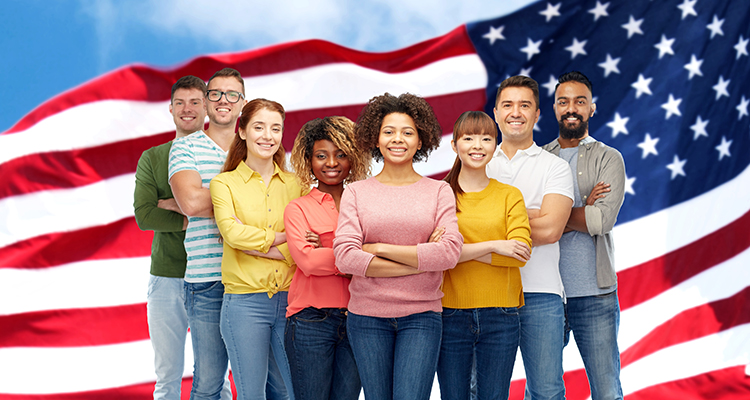Social Issue Essay Sample About Race Relations in America
Introduction
Race defines the difference in individuals through their variations in skin color and physical appearance and is not attached to any biological or genetic aspects. The presence of the black race refers to all dark skinned people whether they are related or not. The commonly identified divisions of race include Caucasian/white, Mongolian/asian, Australoid and the Negroid/black. By terming individuals as Black, White or Latino portrays more of a social group than a genetic distinction of mankind.
Looking at these social aspects also gives a brief history of their background and origin. When a person refers to the black race, the thought that comes to everyone’s mind is their origin from Africa. However, this form of distinction caters for the majority while the minority is disregarded as they are not recognized.

Level of Apathy towards Minorities in the USA
The minority in any situation is given little or no attention. The United States is a country that hosts individuals from all races all over the states. Contemporary racial inequality seems to be taking a new direction, or at least has taken a different direction in the post-civil rights era. Social scientists have identified a new form of White racial prejudice that takes on a more subtle and covert form. This new form of racial prejudice is in the form of indifference by the White majority to the plight of minorities in America. White ignorance (not knowing) about inequalities in racial treatment and apathy (not caring) is the forms that racial prejudice now takes. Racial apathy has been defined as the indifference towards inequality in terms of racial, ethnic or societal differences and the absence of involvement in social matters on which race has a bearing. Research has shown that this covert form of racism has taken over from the most prominent covert forms. Such has far-reaching consequences on politics and society in general (Bonilla-Silva & David, 2003).
Racial apathy serves the same purpose as past forms of overt racism since it acts as a support to the status quo while also sustaining it. The White majority not only do not ‘see’ race but also they have no concern or knowledge about it (Goldberg, 2006). While these attitudes may easily be ignored as benign, they are an expression of prejudice that has more direct harm on minorities than covert inequality. The argument is that racial apathy allows those who are privileged to express prejudice against those who are underprivileged. There are two important elements to racial apathy. First, there is not caring about the existence of racial inequality and the unwillingness to deal with it. Secondly, it could take the form of intentionally avoiding contact with ethnic minority groups and knowledge of the disparities in ethnicity and race and their effects.
Race Influencing Caucasian-Americans Today
It is now a reality that racial prejudices take on a more subtle form than the traditional forms of racial inequality. Legal measures have been put in place to protect people from prejudice. For example, segregation is disallowed in public schools. Similarly, the right to equal treatment irrespective of race or ethnicity is an important provision of the Constitution. However, the White majority (Caucasians) is often influenced by race in various ways although they view themselves as ‘ok with other races’ (Bonilla-Silva & David, 2003). Racial prejudice is driven by personal behavior although there are institutional mechanisms that allow it to grow. This structure reflects the status quo and perpetuates its growth.
Most Whites seem to have concerns beyond the issue of race when they look at minorities around them. Mostly, this is because they had a positive experience with them in school which they credit to racial diversity. However, Whites structure their lives to avoid contact with other races and in turn the qualities that are associated with such people. High poverty levels, bad schools and poor standards of living do not concern them. This is because they structure their lives to avoid the concerns. Since there are neighborhoods that have more minorities residing there, the well-off White majority avoid going there unless it directly concerns them or if these minorities come to them. They are either totally indifferent to the plight of the minorities or at best express abstract sympathy. They concede no part in past injustices as they see no need to interfere with the present (Tyrone, 2006).
An example of the influence of race on Caucasians is the social crisis that followed Hurricane Katrina. In the emerging crisis, the better-off White population showed a high level of indifference towards the poor Latinos and Black Americans. The fact that the poor did not receive any aid from their neighbor’s reflected the variance in their statuses before the storm.

Improving Race Relations in America
Race relations are being improved in America as a society. It has become everyone’s responsibility to ensure that individuals are not discriminated against through racial factors. It starts at the individual level and grows to become the society’s responsibility to help eradicate cases of racism.
Thanks to anti-racist and multicultural resistance movements across the state, race relations are improving and individuals practicing equality. These movements have made it possible individuals to interact freely and respect each other despite the difference in race. Several campaigns have been launched where the main purpose is to educate people against racism. This initiative has created awareness on the similarities that should bring people together despite the difference brought about by racial factors. Individuals should relate more to factors that bind them than those that divide them.
The law can also come in handy in the effort to improve race relations. Punishments that are stricter should be given for persons who are racist. This will help create equal opportunities of employment and education for all races. With the election of a black president in the midst of a ”white country”, it would be right to make the conclusion that race relations are improving.
Factors Contributing to the State of Race Relations in the Society
Although race relations have been improving over the years, some factors have been slowing down the effort to eradicate racism. Stereotyping is one of the major factors that have ensured that the roots of racism remain strong. The assumption that a certain race behaves or acts in a certain way often draws attention. In order to change this attitude, it is essential that the groups interact (Mills, 2009).
Being open minded in any circumstance will go a long way into preventing racism as everyone is considered equal. With improved race relations in the society at large, the world is gradually turning into a village where everyone can understand another person through personal contact.

